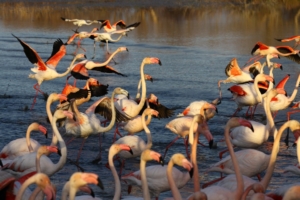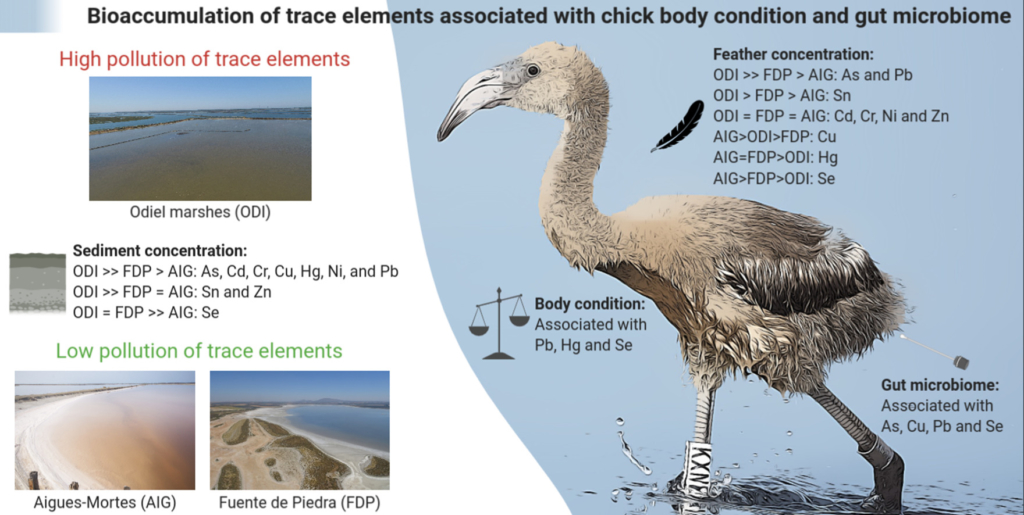For many years, scientists have been warning of the toxicity and impact of lead ammunition on wetlands and the numerous animal species dependent on these habitats. On November 25, the European Parliament voted to ban such ammunition, pledging that “within 24 months, all ammunition used in the vicinity of wetlands in the European Union must be lead-free.”
40 years of lead poisoning studies
For more than 40 years, the Tour du Valat, a research institute for the conservation of wetlands, has been conducting extensive scientific research on the lead poisoning caused in birds by lead shot. These internationally renowned studies helped to support the original proposition by the European Chemicals Agency (ECHA); they were carried out in the Camargue and indicate high levels of mortality and reduced survival in waterbirds suffering from lead poisoning after ingestion of lead shot. There is scientific consensus on the risks associated with lead ammunition as well as on the solutions to this problem. In 2018, and again this year, dozens of European scientists – including those at the Tour du Valat – as well as human and veterinary health professionals, have sent a letter to the European Commission calling for action [1].
 Recent results show impacts on flamingos
Recent results show impacts on flamingos
It is estimated that lead poisoning, mainly due to the ingestion of lead ammunition, kills more than a million wild birds per year in Europe, and causes sub-lethal poisoning of more than 3 million. A recent study by the Tour du Valat, published in the journal Science of the Total Environment, also demonstrates the impact of lead on flamingos, which can be measured on the body condition of the chicks and their intestinal microbiome.
Birds are the ideal sentinels of their environment as they are usually at a high level in the food chain. In addition, the concentration of metallic trace elements, formerly known as “heavy metals,” can be easily assessed in birds without harming them by analyzing their feathers. The Greater Flamingo (Phoenicopterus roseus), a species that often frequents polluted wetlands, is an ideal model for studying the health effects of trace metal elements.
An unpublished study on the effects of bioaccumulation
There is widespread evidence of the adverse effects of toxic exposure on wildlife, but metallic trace elements are generally found at very low and sub-lethal levels. Nevertheless, these elements tend to accumulate at higher concentrations at the top of the food chain in a process known as bioaccumulation, whose effects on the health of natural populations have been insufficiently studied up until now.
In close collaboration with the Tour du Valat, Dr Mark Gillingham sampled flamingo chicks at three sites in the Mediterranean Basin: the Odiel marshes, the Fuente de Piedra lagoon, and the Aigues-Mortes saltworks. The Odiel marshes are one of the sites in the world the most polluted by trace metal elements (due to historical mining dating back to 3000 BCE). The authors then used a new method to detect the bioaccumulation of ten trace elements in feathers (cadmium (Cd), chromium (Cr), copper (Cu), mercury (Hg), lead (Pb), nickel (Ni), selenium (Se), tin (Sn), and zinc (Zn)). This research provided the ideal framework for examining the effect of bioaccumulation of metallic trace elements on two key health parameters: body condition and intestinal microbiome. Two elements appear to be of particular concern, lead and selenium.

The researchers discovered that the bioaccumulation of lead and selenium (mainly detected in the Odiel marshes) had a negative effect on body condition, an initial indicator of the harmful effects of these elements. Above all, they found that lead resulted in a strong reduction and variation in the number of bacterial strains present in the intestinal microbiota. Their finding suggests that lead negatively affected the intestinal microbiota of each individual in an unpredictable and chaotic manner between individuals, destabilizing the intestinal microbiota from its healthy, balanced state. This microbiota is involved in a wide variety of crucial functions in animals, from the immune system to nutrient absorption and metabolism. In addition, the intestinal microbiota is thought to play a key role in protecting host animals from the harmful effects of toxins. If the chronic bioaccumulation of trace metal elements has a detrimental effect on the intestinal microbiota, it will also affect the health of its host.
Another interesting result was that the bioaccumulation of selenium had a different effect on the intestinal microbiota by increasing the abundance of a specific bacterial strain (Bacteroides plebeians) known to be associated with the degradation of microalgae, a component in the flamingo diet. It is important to note that chicks in poor physical condition had a greater abundance of this same bacterial strain. As microalgae are known to be very effective in the metabolism of selenium, the authors conclude that a diet rich in microalgae leads to a higher bioaccumulation of this element, which in turn results in poorer body condition.
Taken together, these results suggest that even chronic sub-lethal exposure to metallic trace elements in flamingo chicks has a negative effect on the health of this emblematic species. Given the importance of wetlands for biodiversity in ecosystems, these results confirm the urgent need to monitor and manage pollution to avoid deleterious effects on the species that depend on them.
Bibliographic reference : Mark A.F. Gillingham, Fabrizio Borghesi, B. Karina Montero, Francesca Migani, Arnaud Béchet, Manuel Rendón-Martos, Juan A. Amat, Enrico Dinelli, Simone Sommer. 2020. Bioaccumulation of trace elements affects chick body condition and gut microbiome in greater flamingos. Science of The Total Environment. 2020, 143250, ISSN 0048-9697, https://doi.org/10.1016/j.scitotenv.2020.143250 [2]
List of our paper on lead ammunition on birds [3]
Contact : Dr Arnaud Béchet [4] (email [5])- Head of Department – Greater Flamingo Project Leader